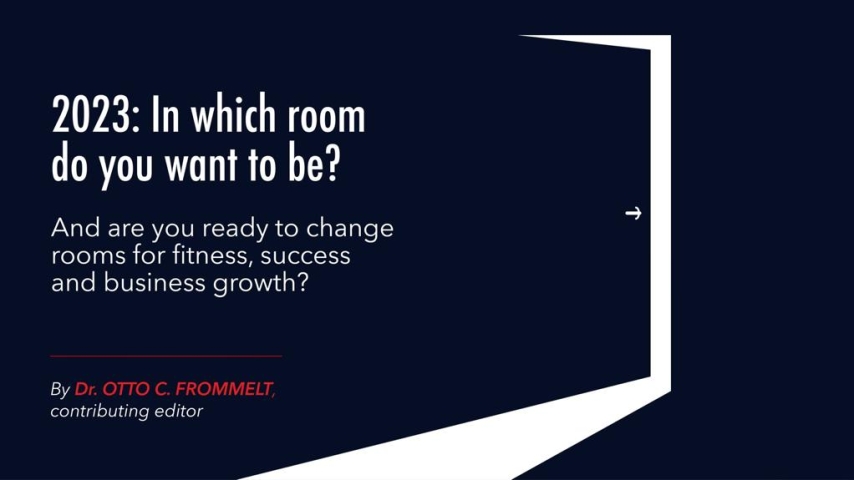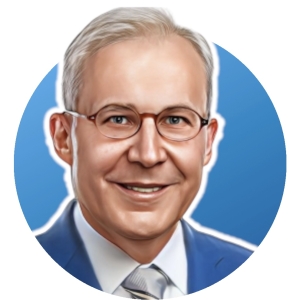
2023: In which room do you want to be? And are you ready to change rooms for fitness, success and business growth?
How can you manage a healthy organization to stay not only fit, but also agile in a highly volatile and uncertain business environment in 2023? What needs to be done to address the current challenges and respond to the opportunities in a fast-changing world? Where are you and where should you be? A postmodern leadership concept is proposed which regards the individual co-worker, team, departmental and its organizational journey to drive transformation with a focus on customer needs, efficiency and modern way of working. In addition, it considers the notion of „ambidexterity“ (1), i.e. a healthy balance between exploration (value creation) and exploitation (value capturing) as a strategic key factor in the prosperity of any organizational system.
Rooms as leadership concept for learning and development
The notion of a learning loop and development happening successfully, is to transition through four rooms. Namely:
- COMFORT ROOM
- PRESSURE ROOM
- LEARNING ROOM
- GROWTH ROOM
The feelings associated, color mindset and color mood in the rooms are all different and outlined below.
It is important to note that every room has a particular feeling associated with it. The color represents the mood in the room and its individual mindset. For instance, in the comfort room that is painted blue, you feel in balance, calm and relaxed. Moreover, it is advocated that oneself should not stay put just all the time in one room only, but depending on the personal competence, task or project, there is a need to move and circulate. This is, however, not restricted just to one person. It applies for a team or entire organization, too. Ergo, the learning loop and its development journey is flexible and adaptable to the individual, actual environment, task or process. In this vein, room-hopping inclusive.
Exhibit 1: Rooms as a learning loop and development
Use case example
A public organization is digitalizing all its start-to-end business processes, totally, at 100 percent. Some co-workers are comfortable and pleased in how they conduct their work today. They are clearly in the comfort room, but love to take on new challenges. Others might not feel good to adjust to significant change and a new way of working as well as new technology. They might fear not being able to work, for example, with new IT tools or new processes. As a matter of fact, they are in the pressure room. The feeling is being under pressure. In this case, it is suggested to accept nudging and to get somehow quickly into the learning room. Otherwise, the person remaining in the room might get sick or suffers unnecessarily.
The solution is to change room with a safe space for learning and testing the unknown. These colleagues want to develop the processes and organization with passion. Moreover, they have a growth mindset that is about: setting stretched objectives, to innovate and to change. However, I also argue that it is neither good, nor healthy to continuously stay in one room only: neither for the individual, team, nor the organization. In this vein, it is important to notice and indeed needed that one can relax, wind down and consolidate in the comfort room. This is perfect “lagom”. Again, as an individual, but also as an organization. But it is also crucial to transition to the growth room to develop and thrive. This notion of managing change needs the right mindset, besides competence and passion.
Benefits
The objective of the rooms' framework is to make co-workers more aware that they need to rotate and be open for learning, innovation and growth, but conducted in a balanced way. It is for the health of the individual and organization and by practicing to stay fit: mindful leadership. It also enables the team and organization to operate in a mode of exploitation of current opportunities and exploration of future challenges.
To conclude, walking and circulating through the different rooms creates a learning culture, circular mindset and ambidextrous organization that is fit and agile to manage the challenges of the future. In other words, being and staying fit for the future as individual, team and organization: “Not mind full, but mindful”
Ambidexterity: „The most accepted definition of ambidexterity is a balance between explorations and exploitation; organisations capable of exploiting their existing competencies while simultaneously exploring new opportunities. James March (1991) refers to this as the exploration of new possibilities and the exploitation of old certainties. Exploitation includes such things as choice, refinement, production, selection, execution efficiency and implementation. While exploration encompasses knowledge creation and analysis of future opportunities“.
Translation of Lagom: It is a Swedish word meaning "just the right amount". The word can be variously translated as "in moderation", "in balance", "perfect-simple", and "suitable". Whereas words like sufficient and average suggest some degree of abstinence, scarcity, or failure, lagom carries the connotation of appropriateness, although not necessarily perfection. The archetypical Swedish proverb "Lagom är bäst", literally "The right amount is best", is also translated as "Enough is as good as a feast", or as "There is virtue in moderation" (Wikipedia).
Notion of Pressure Room: The Author was inspired when listening to the song "Under Pressure" of the Rock band Queen with Singer David Bowie. Hence, he named it “Pressure Room”. Please note that pressure is also a force (its symbol is: p).
Article also published in Management KMU-Magazin (German): „Wie virtuelle Räume achtsame Führung unterstützen können“.

